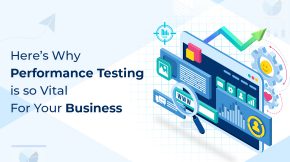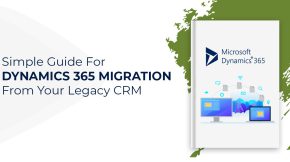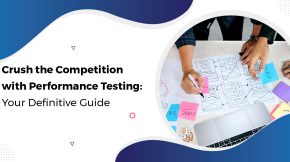Power BI: Game Changer for Your Business
Every business is unique, and the right business intelligence (BI) software considers them and offers a complete, customized solution. One such solution is Microsoft Power BI, which allows you to access your business data visually. In a world that constantly sees massive data increases yearly, you must have a quick and easy way to determine what information is important and actionable. Power BI calls for using creative tools to attain effective results and protect data through modern-day encryption, sensitivity labeling, and other techniques.
Moreover, Power BI has outstanding distribution capabilities, and its integration with other Microsoft services and products makes it worthwhile. With Power visuals and intuitive dashboards, Power BI is the right decision for your business.
Today, we will see how you can get the most out of Microsoft Power BI for your enterprise. This article provides the foundation for you to get more out of your data.
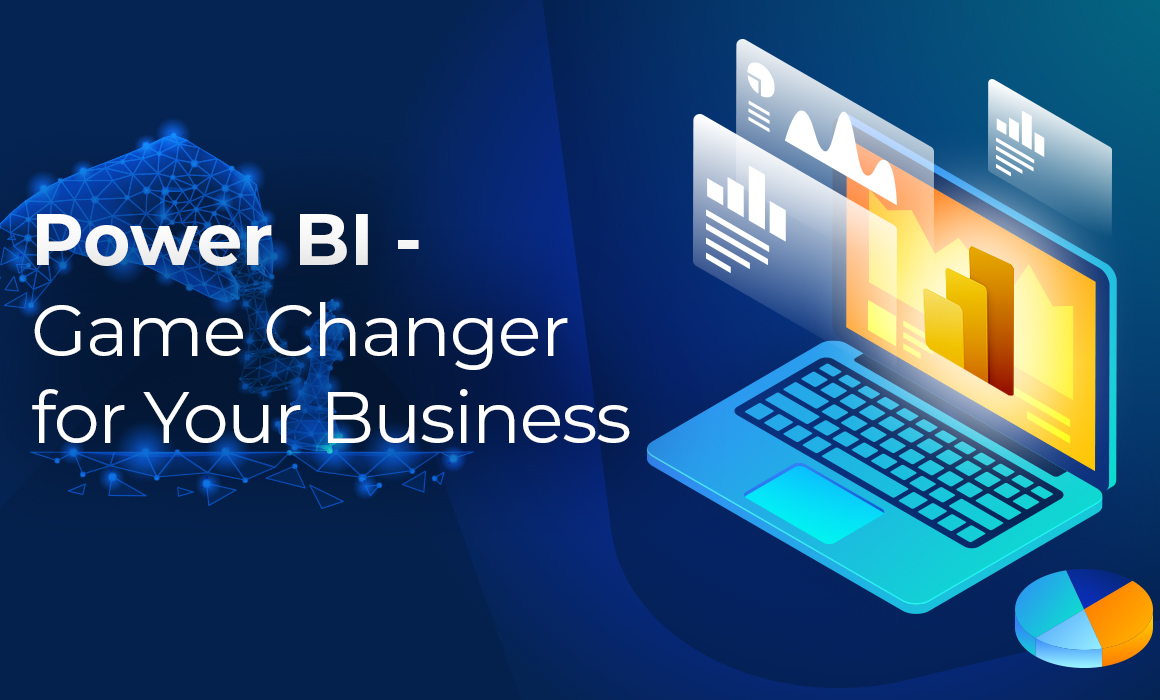 Microsoft Power Platform
Microsoft Power Platform
To explain Power BI, we need to step back and explain the Power Platform. Microsoft CEO Satya Nadella stated, “Empowering citizen developers is what the Power Platform has been built for. It’s great to see the momentum–whether it’s on Power BI, Flow, or PowerApps.”
The vision for the Power Platform is that instead of relying solely on developers in the future, every employee can access the relevant parts of the Power Platform to develop apps, automate systems, and analyze information. That is because the Power Platform is a low-code platform.
To help empower citizen developers, they created four modules.
- PowerApps
- Power Automate
- Power BI
- Virtual Agent
Here is a quick overview of these services.
Microsoft PowerApps helps professionals create actionable applications based on their data from customers, vendors, and partners. Microsoft Power Automate integrates multiple tools or applications. Virtual Agent makes bot creation almost as easy as using a word document.
Finally, Power BI puts all this data and information together in one place for users to access.
What is Power BI?
BI (Business Intelligence) is the study of analyzing data to understand an enterprise’s past, present, and future results.
While traditional BI usually focuses more on past and present data, Power BI also has several artificial intelligence (AI) tools to help you predict future results. This predictive analytics capability separates it from traditional BI tools.
Additionally, the tool provides stunning visuals you can access with a mouse click. Instead of scouring rows of excel spreadsheets, Power BI charts and graphs track results automatically for you once they are set up. You get a complete business analytics solution that helps visualize data and inculcate relevant insights into the business solutions. It is a collection of various software and services that convert unrelated sources into refined and insightful matter.
Because it is so easy, you can integrate and filter multiple data sources in one central location. You can use these visuals to determine what steps your enterprise needs to take next to remain competitive and grow. It thus provides a unique platform for potential users to build solutions for analyzing data creatively.
The key is that you need to know how to use the software, which we will discuss next.
Who uses Power BI?
Statisticians, analysts, and administrators of different businesses use Power BI to understand the progress of various departments across industries. Management sectors of various businesses use Power BI to prepare reports and build business transcripts and statements computing the track record.
Key features of Power BI
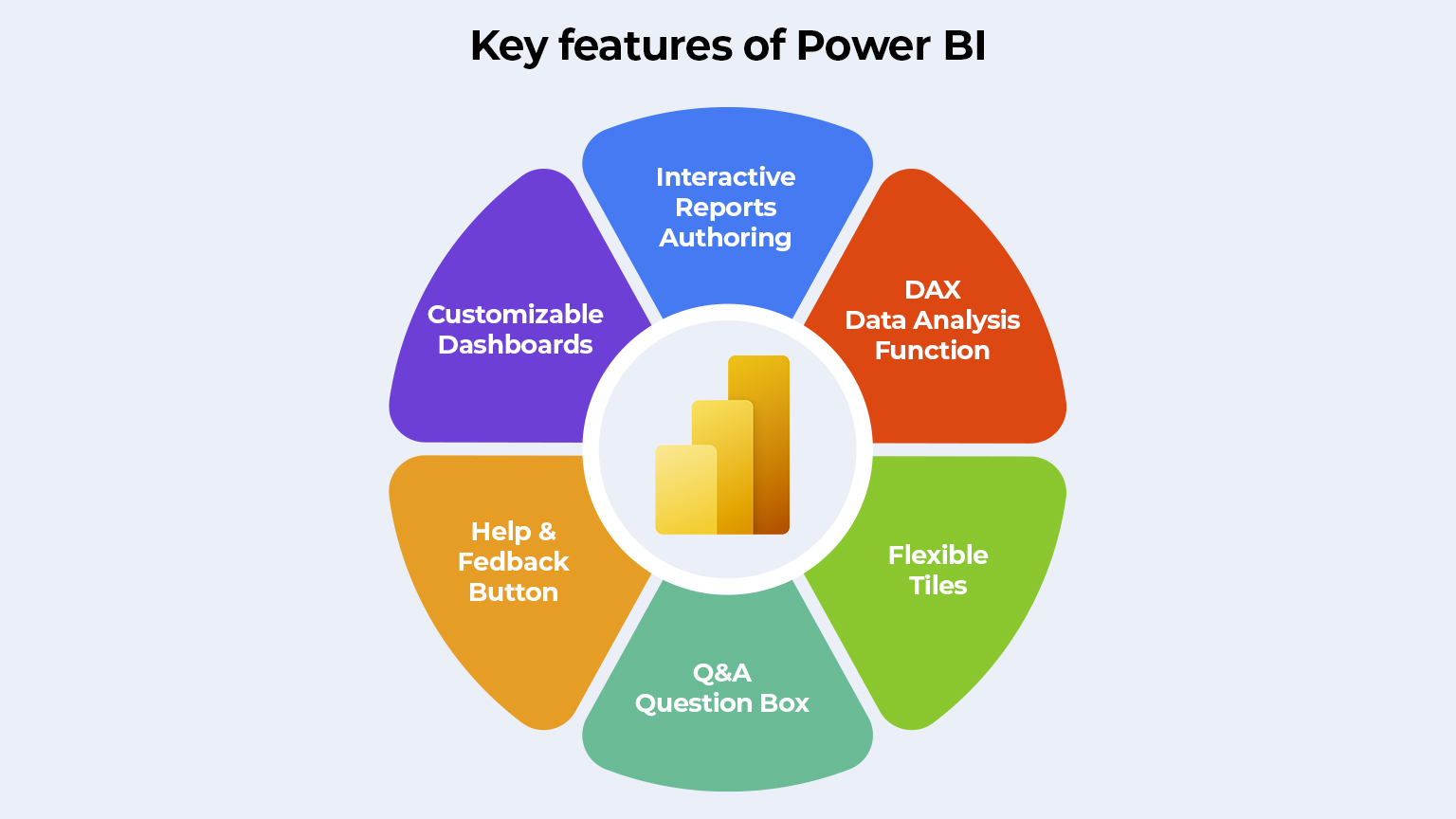 The most significant features of Power BI are listed below-
The most significant features of Power BI are listed below-
Power BI lets users import data from various databases and analyze it through interactive dashboards, informative reports, and intuitive transcripts. The interactive Power BI Desktop allows users to create reports without having any technical background.
One of the noteworthy features of the platform is the presence of attractive visualization tools. Users can construct bar charts, line charts, funnel diagrams, and so on with the help of this platform.
The Get Data feature allows users to derive data from different data sources present in the spectrum. This platform also allows users to filter data according to the demand of the study.
Power BI components

Power BI’s key components include the Power Query, Power Pivot, Power View, Power Map, and Power Q&A.
- Power Query– It allows users to extract data from various databases like SQL, MySQL, SQL Server, etc. Power Query allows users to fetch data from relevant records, delete data, and excerpt relevant data.
- Power Pivot– It is used to model simple data, creating relationships between different variables displayed in Pivot tables. Power Pivot offers tremendous space to create designs and visualize diagrams.
- Power View– Helps in preparing convincing reports and visualizing data using slicers. This component offers a ‘drag and drop function’ that assists users to obtain visualizations in their Excel sheets.
- Power Map– Assists in visualizing data in 3D mode. Power Maps are used to highlight differences present in the data with the help of colors and shades.
- Power Q&A– Allows users to obtain solutions for the queries raised by them. This component is significant as it recognizes users to raise questions in their natural language.
Reasons to use Power BI
- Power BI allows the streamlined distribution of data across various sources.
- Power BI also uses Artificial Intelligence to integrate with Azure Machine Learning. Users can easily customize and upgrade the settings at their convenience. It also gives the ability to customize security features.
- Dashboards available on Power BI are quick in service and allow users to identify and eliminate problems without much hassle.
- Users can easily share reports, dashboards, and data with others using the Power BI service. The real-time feature allows users to obtain access to real-time analytics from multiple sources.
- The platform offers a workspace to users and allows them to share reports outside the organisation that have a Power BI license.
Thus these trending features satisfy user requirements and allow Power BI to stand apart from the crowd.
Power BI Architecture
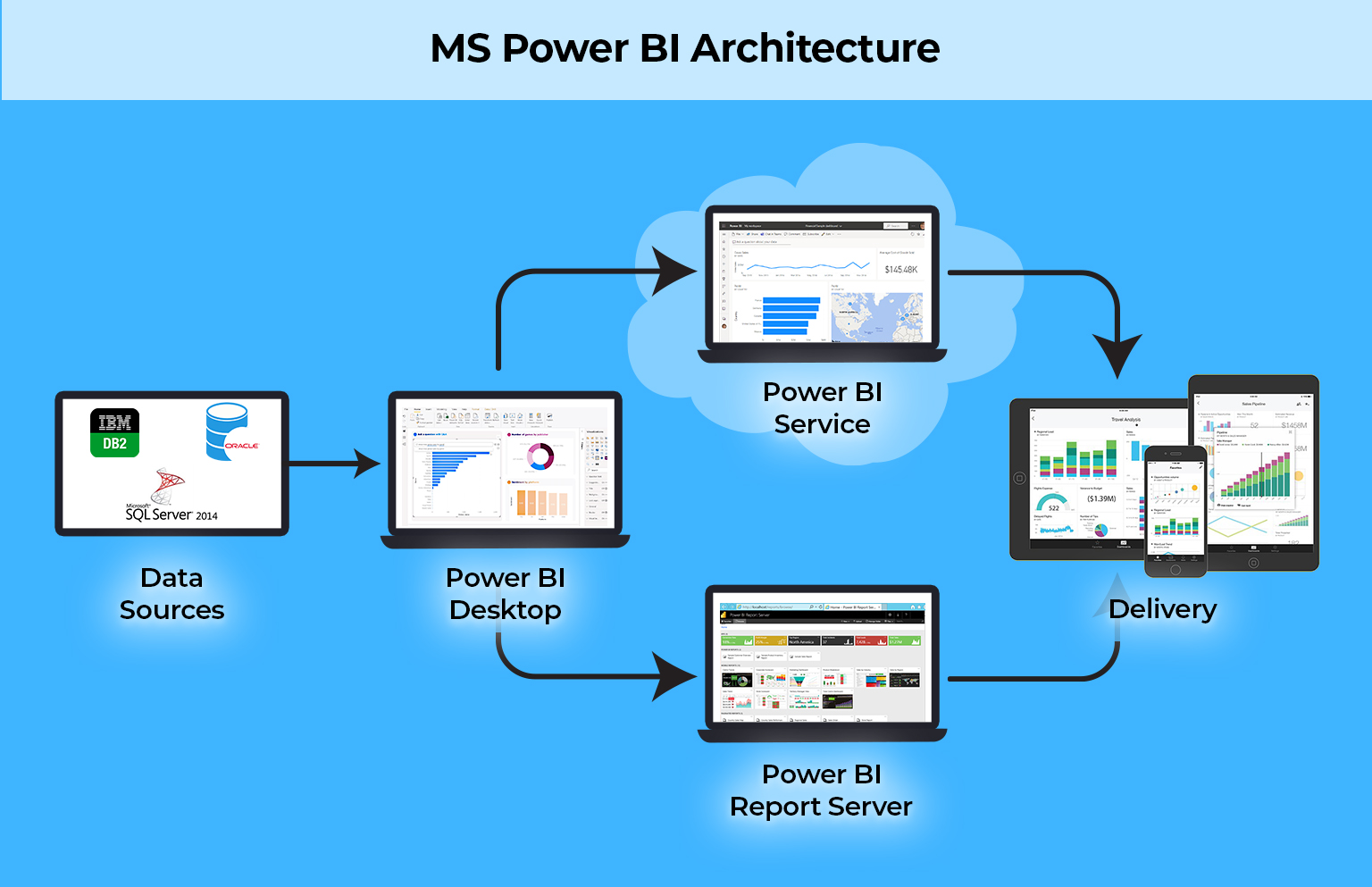 The Power BI apps available on Power BI allow users to remain connected to their data. The Power BI architecture service website is based on Azure. The Power BI desktop helps visualize datasets and create reports. Power BI services are used to publish records with better efficiency and understanding. Power BI services help create visualizations that bring data to life.
The Power BI apps available on Power BI allow users to remain connected to their data. The Power BI architecture service website is based on Azure. The Power BI desktop helps visualize datasets and create reports. Power BI services are used to publish records with better efficiency and understanding. Power BI services help create visualizations that bring data to life.
How to use Power BI?
Planning
The first step is determining how you can use their visual dashboards. While it sounds great to put all your data in one location, it could diminish the value of the actionable data you can receive if you do not have a plan.
Often when we do Power BI consulting with clients, the most challenging part of the process is identifying what data points they want to analyze for their business. Once you have that information, it is much easier to set up the system.
For example, we work with a sports medicine company in California. They are a growing company that just merged with two other companies. The challenge is the new company has different metrics.
To help them find areas of interest to analyze, we created reports all employees could access by combining Power BI and SQL Server Reporting. It took time, but now everyone in the company receives the same standardized reporting.
Design
Once you finish planning, you can start designing your Power BI dashboards. You want to keep the best UI practices in mind to ensure your dashboard layouts make sense to your users.
For example, when executives review your sales dashboard, can they understand what metrics you are tracking in 30 seconds or less? If not, your dashboard might not have the right information or terminology.
Make sure you design a dashboard specific to your users’ needs. It sounds basic, but far too many dashboards are too complicated. Users stop relying on them because it takes more time to go through the dashboard and then check the data independently. Good design prevents this from happening.
Implementation & Development
Once you have the design, it is time to implement your dashboard. You can choose between several dashboards, including Power BI, Tableau, Qlik, and Domo.
While our developers have experience with all these technologies, below, we share how to implement Microsoft’s Power BI. We find that the Power BI services include the analytical reports and integrations most of our customers need.
That said, it is important to have developers with the right Microsoft SQL Certifications (SSIS/ SSRS/SSAS) to help with the implementation and development. At Beyond Key, our developers are dedicated to ensuring your dashboard extracts, transforms, and loads (ETL) your data correctly.
If you have any questions about what type of dashboard you should use, feel free to contact us. We will be delighted to review your options.
Integration
We have already discussed how Power BI integrates with the Power Platform (Power Automate and Power Apps). However, the software can connect with a lot more tools such as Microsoft tools like Dynamics 365, Excel Spreadsheets, and SharePoint.
Keep in mind that Power BI is not limited to Microsoft products. The intelligence dashboard also connects with third-party tools like GitHub, Mail Chimp, and Google Analytics, to name a few services.
For example, we helped a not-for-profit reproductive healthcare center improve its reporting on the data it had from its EHR system. All patients’ records were then integrated into the BI solution to integrate and display massive amounts of data in one central dashboard.
By connecting the EHR to Power BI through a SQL Service, they improved productivity across their 20+ health centers. Additionally, the scalable reporting process and automated system saved time and money from their earlier processes.
QA
You must verify your ETL processes work correctly. This can require several tests such as Data Uniformity, Load, Load & Performance, and BI Reporting tests.
We often work with leaders in their field who need to make sure their data is correct. This is often the challenge with excel reports. They often break or are difficult to maintain over time.
We were working with an audiovisual technology company in Colorado. They needed to ensure accurate data to track refunds and other sales metrics for their enterprise.
QA played an important role in ensuring they received quality reports. The more accurate this data is, the better they were able to increase their performance.
Final Thoughts
As you can see, Power BI can help enterprises analyze, aggregate, visualize and share their data. It allows firms to improve their operations and meet business metrics. It is a self-service tool that permits employees to analyze data and bring necessary reforms in management. It permits users to create subsets of data and change complex data to simple compositions. The key is to set up the platform correctly at the beginning.
Have any queries about how to set up Power BI for your Business? Let us help. Contact us today for a free 1-hour Power BI Consultation.








 Microsoft Power Platform
Microsoft Power Platform  The most significant features of Power BI are listed below-
The most significant features of Power BI are listed below-
 The Power BI apps available on Power BI allow users to remain connected to their data. The Power BI architecture service website is based on Azure. The Power BI desktop helps visualize datasets and create reports. Power BI services are used to publish records with better efficiency and understanding. Power BI services help create visualizations that bring data to life.
The Power BI apps available on Power BI allow users to remain connected to their data. The Power BI architecture service website is based on Azure. The Power BI desktop helps visualize datasets and create reports. Power BI services are used to publish records with better efficiency and understanding. Power BI services help create visualizations that bring data to life. 

